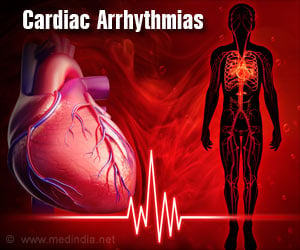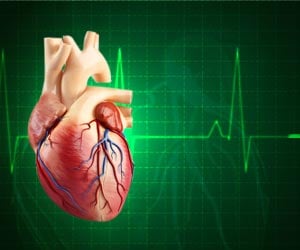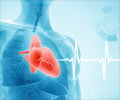- Arrhythmia refers to an abnormal heart rhythm or irregular heartbeat, and is associated with several complications including sudden death.
- Heart Rhythm Week 2017 aims to diagnose those still remaining undiagnosed, by urging everyone to learn to check their own pulse and consult their physician should they sense something abnormal.
Why Is It Important To Learn To Check One’s Pulse?
Arrhythmias, or disturbed heart rhythm may lead to several complications unless diagnosed and promptly treated. Some arrhythmias may be symptomatic and prompt the person to see the doctor while others may not cause any symptoms and remain undiagnosed, but still cause complications at a later date. If people learn to feel and check their pulse, it would help to save several lives that would otherwise be lost due to remaining undiagnosed until it is too late.Since then he had been an active campaigner for Arrhythmia Alliance helping to educate and spread awareness about arrhythmias.
In a video recording, he describes clearly how to check one’s own pulse and this video can be viewed at www.knowyourpulse.org
Where Exactly Is The Problem In Heart Arrhythmia?
Simply put, the pulse that we feel peripherally, is generated in the heart from a structure called the pacemaker of the heart (the sinoatrial or SA node). The generated impulse is transmitted across the heart’s conduction system in the heart muscle. This represents the electrical activity of the heart and is felt peripherally as the pulse.Normally the rate of the pulse is between 70-90 though normal variations may occur without any consequence. The normal rhythm is described as regular.
In an arrhythmia, the main pacemaker or the SA node fails and other parts of the conduction system generate their own disorderly and ineffective impulses causing specific symptoms. In some cases, there is a block along the conduction system and the impulse goes back to the SA node and starts a second pulse without the earlier one ending fully. This is termed ‘re-entry.’
Some common arrhythmia symptoms include the following:
- Tiredness
- Fainting attacks
- Dizziness
- Palpitations
- Missed or skipped beats
How Can We Help In Spreading Awareness About Arrhythmias?
The Heart Rhythm Week is organized by the Arrhythmia Alliance, the leading heart rhythm organization. Since 2004, it has been actively involved in creating awareness and educating the public on arrhythmias through concerted campaigns in various parts of the world.- Making 1 million people pulse aware
- Taking 10,000 pulse checks
- Identify 1000 persons with abnormal heart rhythm
- Organize at least 100 ‘Know Your Pulse’ events
Arrhythmia patients can share their stories on social media and do their bit to create awareness about this condition.
Physicians can organize a small event in their community and give a talk on arrhythmias and the importance of early diagnosis and treatment.
Some of the campaigns currently being sponsored by the Arrhythmia Alliance include
- Defibs Save Lives
- Know Your Pulse
- Whole Hearted
- Don’t Fail On Heart Failure
- Celebrating A Year Without Stroke
- Anticoagulation Self-Monitoring Alliance (ACSMA)
Nothing can be more rewarding or heartening than to know that we have helped save a person’s life or bettered his quality of life by raising and spreading awareness about this fairly common condition.
References:
- Know Your Pulse - (http://www.heartrhythmalliance.org/aa/uk/know-your-pulse/)
Source-Medindia














